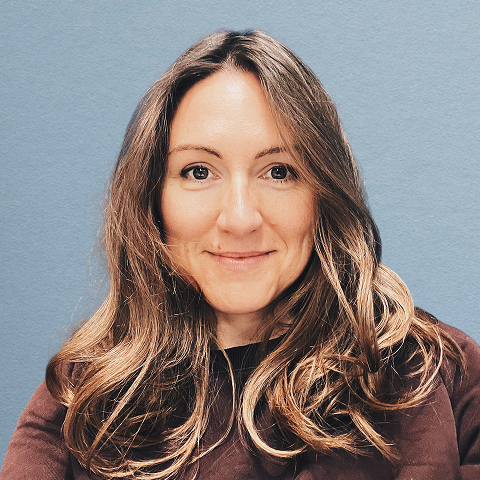
Healthcare Mobile Apps Trends to Follow in 2025
The healthcare industry is evolving fast. In this article, we explore the latest trends shaping mobile health apps and what they mean for patients and providers.
.webp)
Healthcare is moving fast. New technologies, stricter rules, and higher patient expectations are changing the way care is delivered. The pandemic forced both hospitals and patients to adopt digital tools, and this shift has continued since. In 2025, the focus shifts from novelty to solutions that are safe, evidence-based, and practical for everyday use.
Market Outlook
The healthcare mobile apps market is expanding, but different research firms show different numbers because they measure the market in different ways.
- According to Fortune Business Insights, the global mHealth apps market is expected to grow from $ 36.68 billion in 2024 to $ 88.70 billion by 2032, with a CAGR of 11.8%.
- Precedence Research expects faster growth. Their report indicates that the market will reach $ 207.5 billion by 2029, growing at a CAGR of 26%.
- Market.US examines the wider US digital health market, which includes not only apps but also telehealth, devices, and healthcare IT. They forecast growth from 94.8 billion US dollars in 2024 to 567.7 billion by 2034, at a CAGR of 19.6%.
So, depending on the scope, forecasts range from 88 billion globally for mobile apps to over 500 billion for the full US digital health sector.
.png)
Key Technology Trends in 2025
Wearables with Integrated Apps
Wearables now do more than track steps or heart rates. They connect directly to electronic health records, providing doctors with real-time data and helping spot problems earlier. They are also used in research and in long-term patient monitoring.
We built a lifestyle app that combines data from wearables with behaviour tracking, giving coaches a full picture of patient habits. This shows how apps can link everyday choices with clinical insights.
Telemedicine and Remote Care
Telemedicine is now a standard part of healthcare. It covers video consultations as well as secure messaging and other remote models. It is used most in mental health, chronic condition care, and support for older adults.
Telemedicine is not for emergencies, but it makes care accessible for people in remote areas or those who prefer not to travel.
Cloud Solutions and Interoperability
Healthcare providers are moving to the cloud. The global healthcare cloud market is projected to reach $ 64.7 billion by 2025.
Cloud services make it easier to share data between systems and scale as needed. Using HIPAA-compliant cloud services is now standard. They keep patient data encrypted and stored according to strict rules.
AI and Data Analytics
AI and data analytics are now part of everyday healthcare. They are used in radiology, pathology, and for spotting early signs of conditions like dementia. Predictive models help forecast hospital needs and even disease outbreaks.
The challenge is to use patient data responsibly, with consent and strong safeguards. The benefit is that care becomes more proactive and precise.
Internet of Medical Things (IoMT)
Connected medical devices are becoming normal in clinics and at home. From glucose monitors and inhalers to hospital tools that track patient flow, they provide healthcare workers with more useful data and help reduce their workload.
We developed a doctor-facing app that integrates patient data from multiple sources, providing clinicians with a single, clear view. This makes decision-making faster and more accurate.
Gamification and Behavioural Design
Gamification makes health apps more engaging. From VR-based rehab exercises to mobile apps that reward users for following treatment, game mechanics help patients stick to their health goals.
At Diversido, we created apps where children played cognitive games that supported doctors in brain health monitoring. We also built HappyMind, a wellness app that uses gentle nudges and gamified challenges to keep users motivated.
We also developed Safe Sedation Training (SST), an e-learning platform for healthcare professionals. It delivers accredited courses on moderate sedation through interactive modules and assessments. Institutions can enrol staff, monitor progress, and ensure compliance with training standards.
Building Apps that Patients and Doctors Trust
Building healthcare apps is not just about coding. The most important principles are:
- Compliance with rules like HIPAA, GDPR, and NHS standards.
- Human-centred design so apps are simple and easy to use.
- Proven features that show clear clinical or wellness benefits.
- Scalability and interoperability so apps work across platforms and can grow with demand.
Final Thoughts
Healthcare digitalisation in 2025 is about trust, outcomes, and compliance. Hospitals and patients seek apps that are safe, reliable, and proven to make a positive impact. Start-ups and healthcare providers that focus on these values will be the ones who succeed.
At Diversido, we have been building healthcare solutions since 2013. Our apps are HIPAA-compliant, user-friendly, and tailored to meet clinical needs. From patient engagement to clinical management and wellness platforms, our work shows how technology can reshape healthcare for the better.
If you are planning to create or grow a digital health product, explore our healthcare portfolio for real examples of solutions that work.


.png)
.png)
.webp)

